Last week I went to see the Mount St. Helens exhibit at the Portland Art Museum during the typically – but that evening especially sparsely – attended Friday evening open hours. Just afterwards, the museum closed for at least a month but now probably two in order to help flatten the curve. Because this means that many won’t be able to see the exhibit, I’m documenting my visit.
Apologies for some image misalignments or strange angles during a time of social distancing when I avoided getting too close to other visitors.
One notable feature of the exhibit was that it included many more women artists than I might have expected. I had a hard time finding much more information out about them later, which attests to the strenuous curatorial work by the exhibit organizers.
Now we enter the galleries. All plaques can be found online here – nobody needs to try to read the text on my photos of the plaques. My selections just scratch the surface of the exhibit, but capture some of the pieces I found most compelling. Most pieces, unless otherwise noted, are titled “Mount St. Helens“
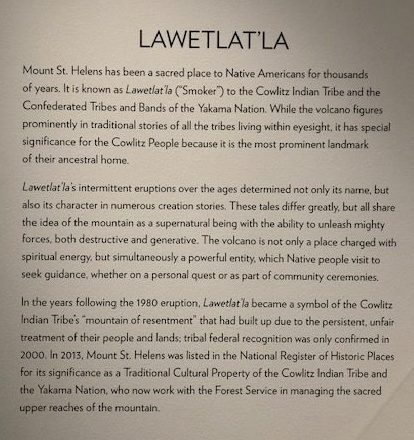
Lawetlat’la
Named by the Cowlitz and translating as “Smoker”, the volcano played a central role in Cowlitz and Yakima Nation tribal culture.
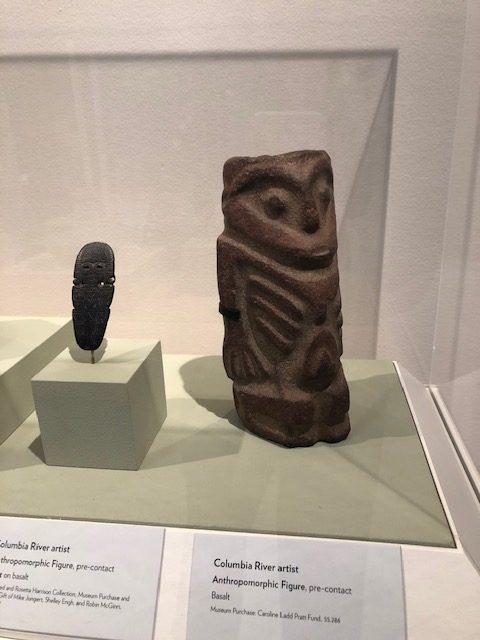
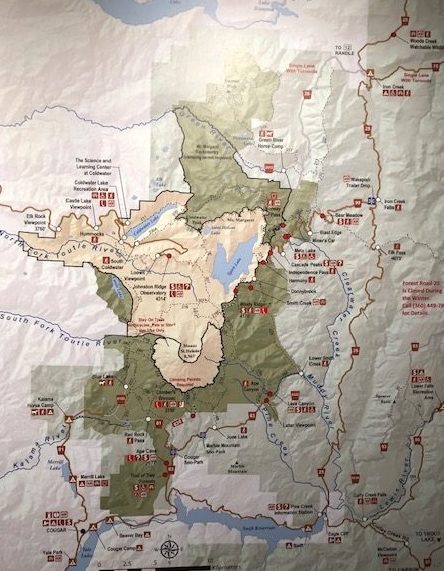
The next room featured a present-day National Park map, a “seismic spider” used to measure seismic events, and video reels about the current state of the volcano.
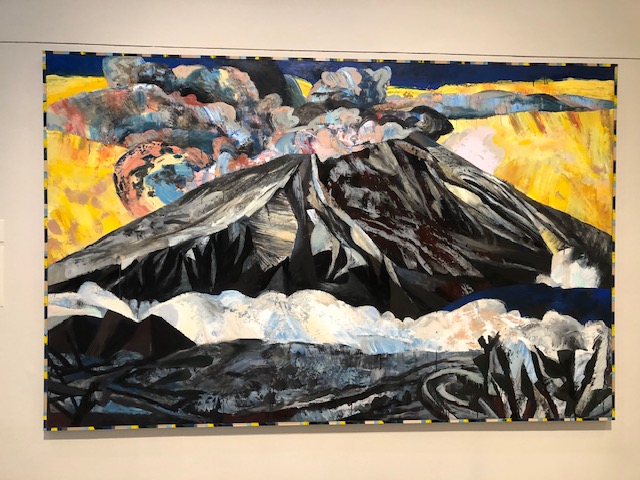
Leading into the exhibit were a series of depictions by contemporary local artist Lucinda Parker.
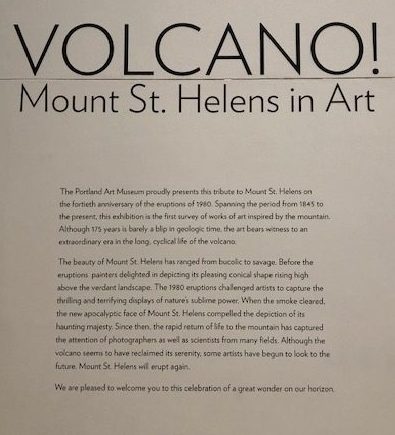
Another welcoming intro to the shape of the exhibit which commemorates 2020 as the 40th anniversary of the 1980 eruption. The exhibit spans the time from 1845 to the present, as it evolved in art from a “pleasing conical shape” to the “Thrilling and terrifying displays of nature’s sublime power” to an “apocalyptic face” compelling depiction of its “haunting majesty” and the present-day return to life and “serenity.”
The exhibit now begins with series of pre-eruption paintings.
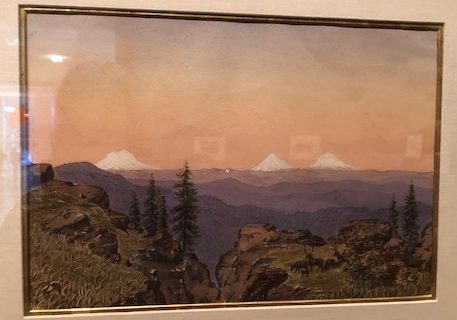
Mounts Rainier, St Helens and Adams by Cleveland Rockwell.
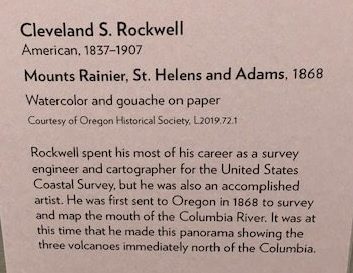
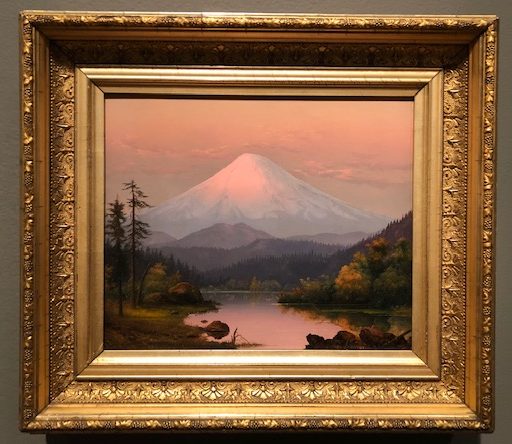
The lower right image of a pleasing conical shape was painted by Grace Russell Fountain in 1980.

It was featured alongside one by her teacher, William Samuel Parrott:
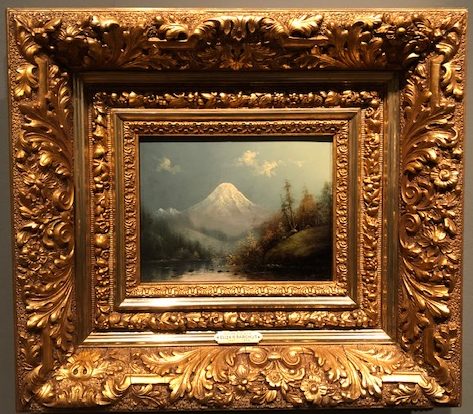
which was flanked on the other side by one by his other student, Eliza Barchus:
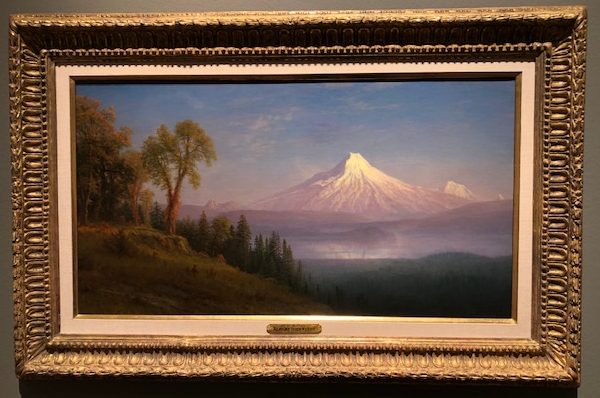
Albert Bierstadt – Mount St. Helens, Columbia River, Oregon, ca. 1889 – the plaque notes that the trees in the foreground are autumnal deciduous, indicating the completion of the painting over a long period of time, spanning different seasons.
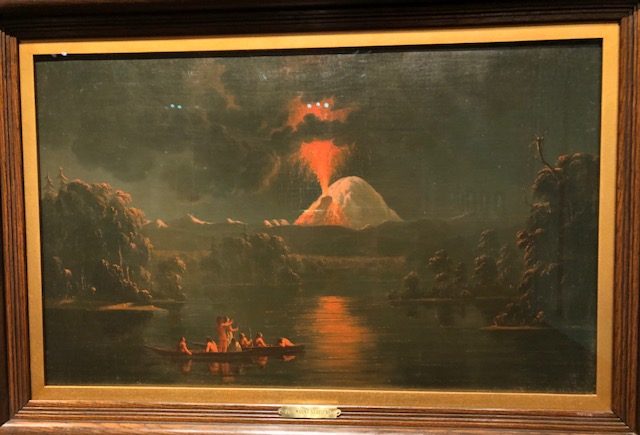
One of the most compelling to me was the nocturnal portrait by Paul Kane between 1869-1856, which was painted in the European tradition of depicting Mount Vesuvius at night. Apparently this is the most famous depiction of Mount St. Helens completed before 1980.

Impressionists like Greta Allen and Clara Jane Stephens were also inspired by the volcano.
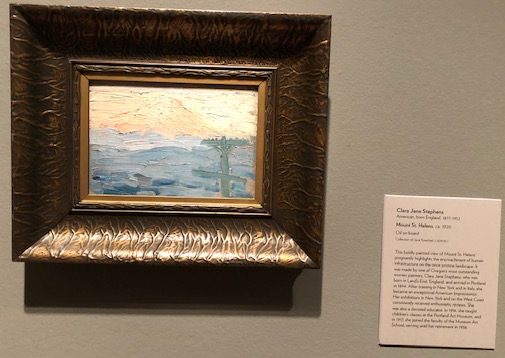
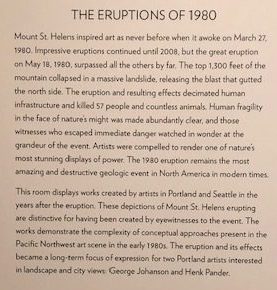
We all know what happened next….. During the eruption, the top 1,300 feet of the volcano collapsed and 57 people in the area were killed. Most of this next section features work by eyewitnesses.
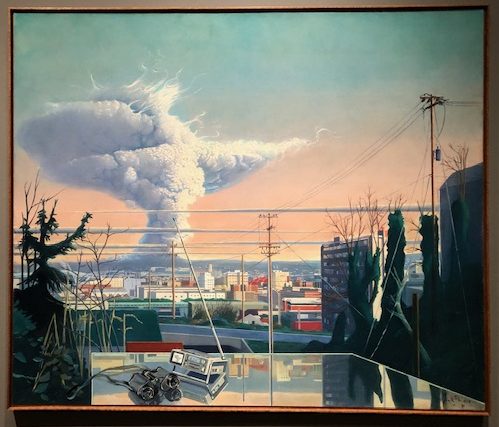
Henk Pander‘s Eruption of Mount St. Helens from Cable Street to the right, and another below. That tenticular ash cloud is quite something.
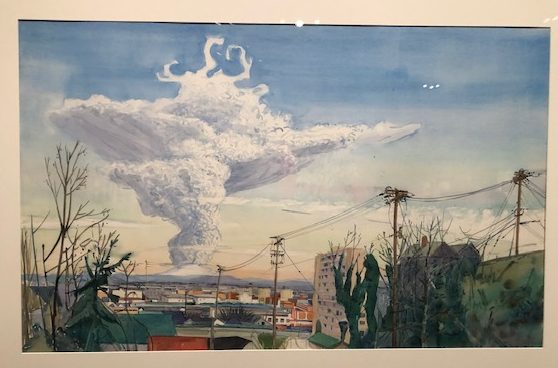

The Mountain Speaks — Softly by Mary Davis on right. This piece was huge and enveloped the gaze right into it.
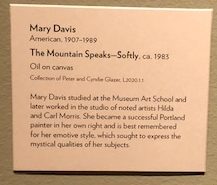
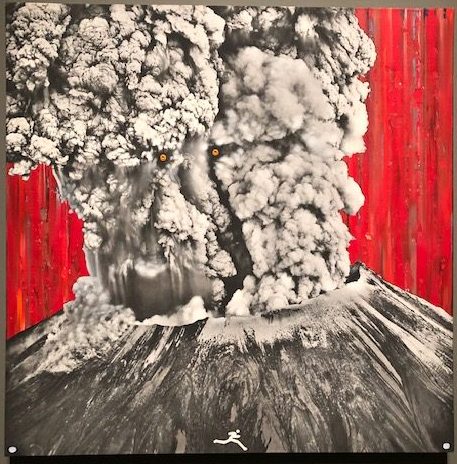
Ok this one, Tag III by Barbara Noah, was one of my very favorites, capturing the transformation “from the ridiculous to the sublime, from Muppet to monster.” Check out those eyes.
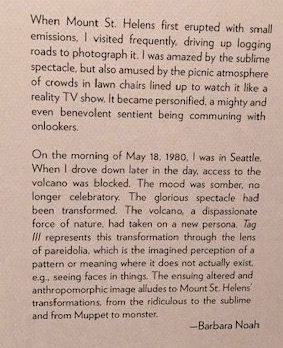
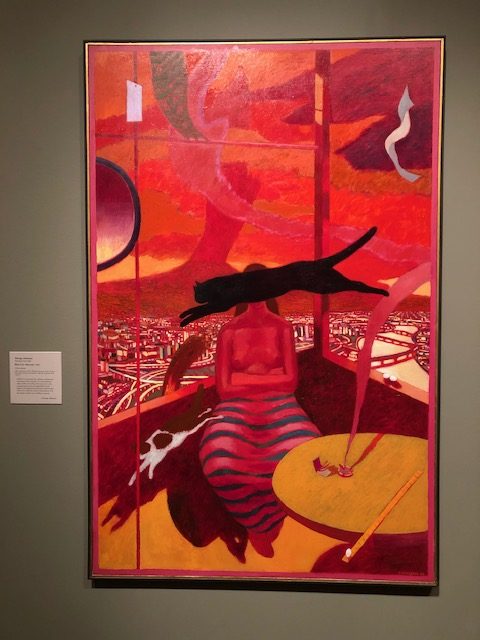
George Johansen, another contemporary artist, plays with the exotic and the many meanings the volcano can take, as in Black Cat – Mountain on the left, and Mirrored Deck, below. The panting below shows a deck party where St Helens becomes a part of the festivities.

This gallery section was followed by a room of photographs, mostly black and white, which depicted the devastation. My images did not come out well, partially because of the glare and also it’s just weird to take photographs of photographs. So I’m not going to show those, but the official Exhibit page features a couple of them.
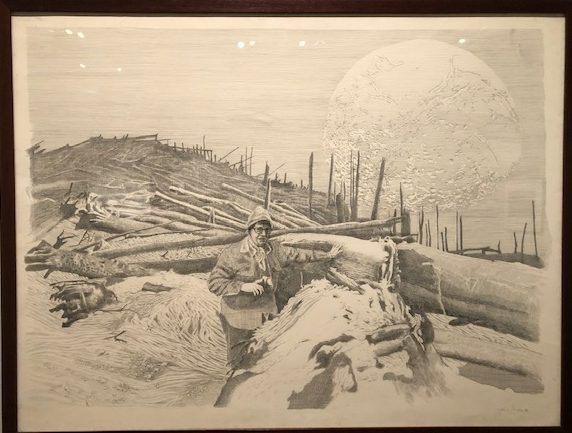
In an alcove off of the photographs I discovered another favorite area: Ursula K. Le Guin’s pastel drawings of Mount St. Helens below and an image of her during a junket into the red zone at left by her friend Henk Pander, who accompanied her on this trip and whose work was profiled earlier.
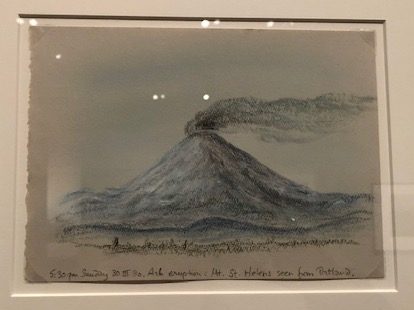
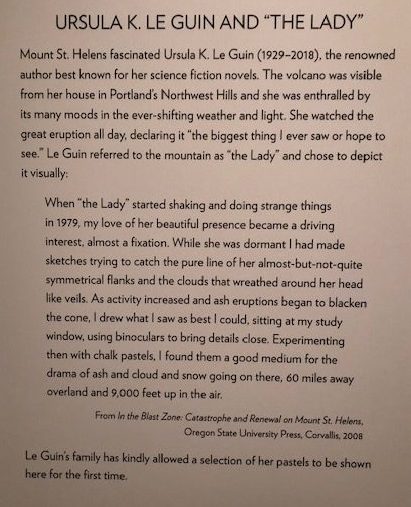
….. back into the room of photographs and objects …..

Glass artists blew ornaments and even entire bowls incorporating the ashes from the eruption.
the pure devastation. ok, just a few photos of photos.
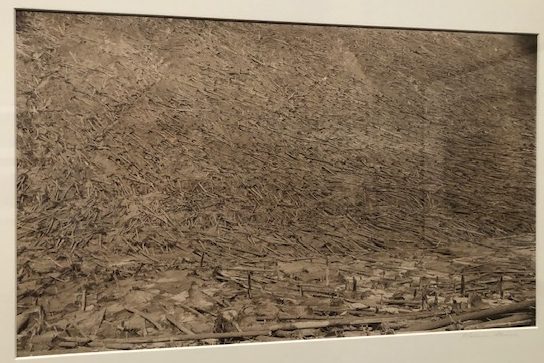
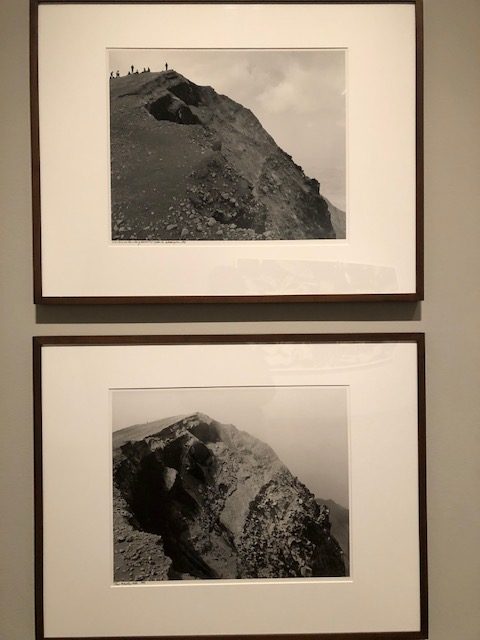
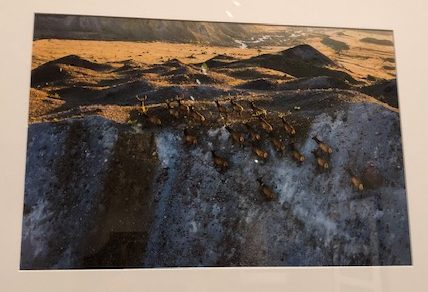
Elk ascending the unstable rim.
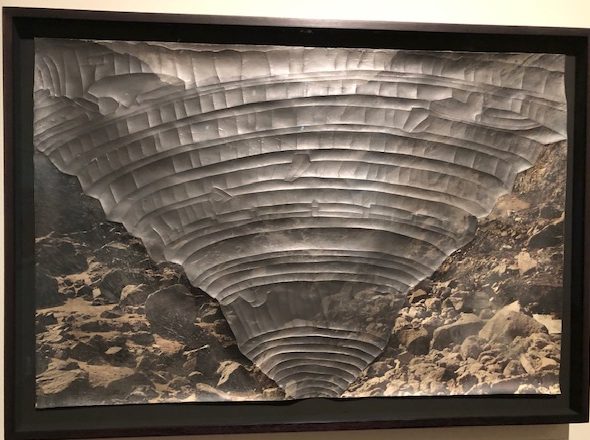
Brad Johnson’s Mount St. Helens Thin Place, Inferno of 2019 — this was another that really captured me. The volcano as a Thin Place, where beings can transit to or from the underworld, also in the tradition of Dante/Botticelli. This piece was made with hide glue and gampi paper on an archival print.
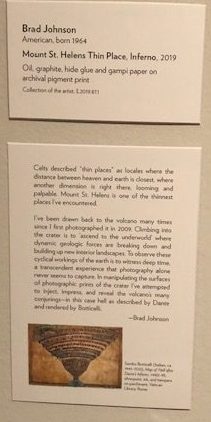
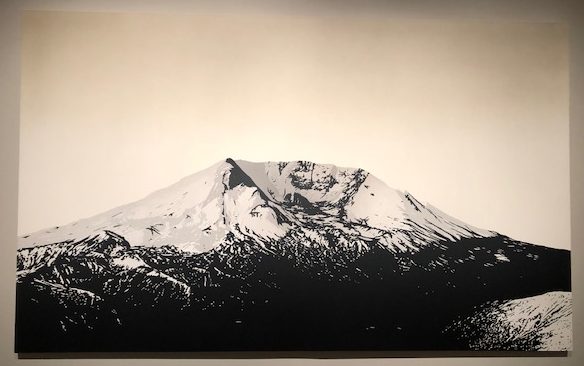
The exhibit was rounded out by this enormous piece by Cameron Martin. Remission, 2006. Acrylic on canvas.
This final piece depicts the uneasy serenity of the volcano on our horizon now that we know what it can do. My photo doesn’t show it, but inside of the crater where the cone grows again the artist did a wonderful job of showing something seething there.
I was 2 years old when the volcano erupted so have no personal memory of this event, though of course I grew up hearing about it. An affinity with the volcano, yes. Maybe at some point I’ll add images from backpacking trips through the moonscape of the MSH dead zone on the Plains of Abraham or the incredible vistas afforded by backpacking in the adjoining Mount Margaret Wilderness.